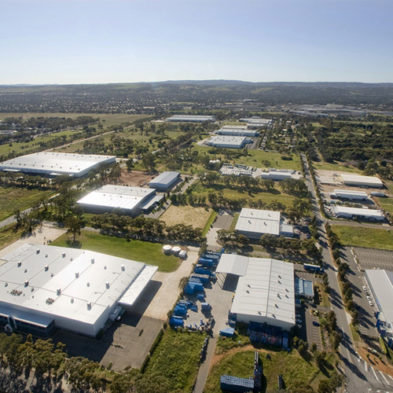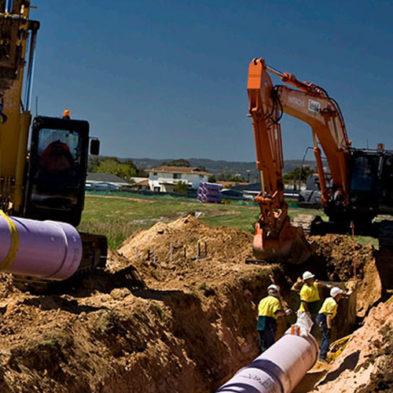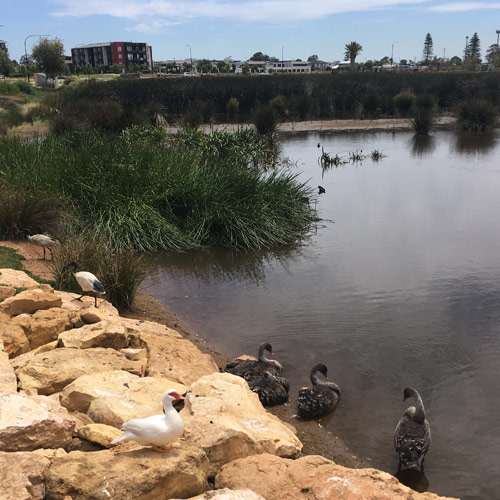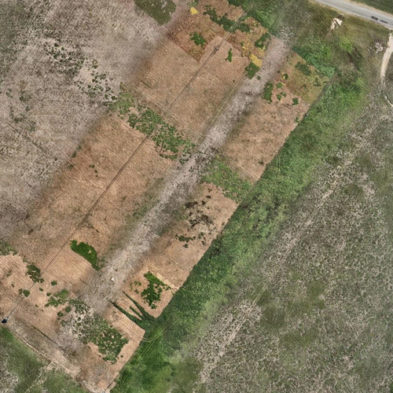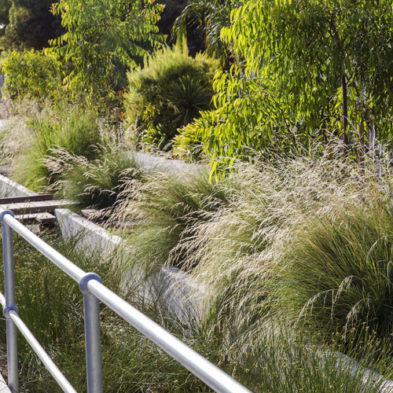Current Water Sensitive Performance
Performance against the goals of a water sensitive city
Greater Adelaide was benchmarked using the Water Sensitive Cities Index in May 2017, at a workshop attended by industry representatives.
Greater Adelaide achieved its strongest result for the goal of Achieve equity of essential services (4.0/5.0). Areas for improvement included Ensure quality urban space (2.5/5.0), Ensure good water sensitive governance (2.8/5.0) and Improve ecological health (2.8/5.0).
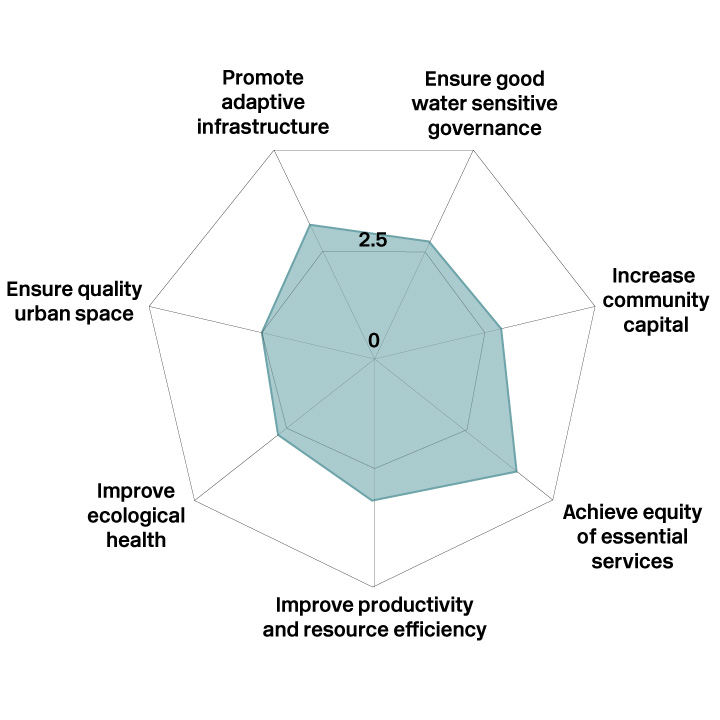
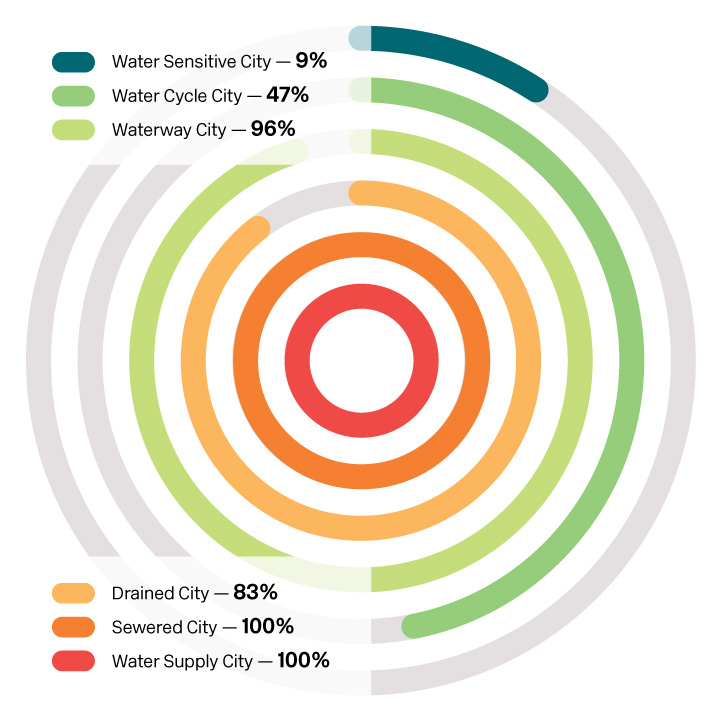
Achieving city–states
Greater Adelaide’s results against the 6 city–states highlights its strong performance is in providing basic services. It has equitable water supply and sanitation services that are safe, secure and affordable (100% Water Supply City and Sewered City). Greater Adelaide also performs well in providing environmental sustainability services (96% Waterways City) and protecting the community against floods (83% Drainage City).
The most scope for improvement relates using water to increase resilience (47% Water Cycle City) and liveability (9% Water Sensitive City).
The Water Cycle City rating could be increased by further action to address diffuse stormwater pollution and increase tree canopy cover.
The Water Sensitive City rating could be improved by fulfilling the multiple objectives of ecosystem protection and restoration, security of supply, flood control, public health, amenity, liveability and economic sustainability.
Change strategy: how to become more water sensitive
- Vision and Transition Strategy for a Water Sensitive Adelaide defines a vision of a water sensitive future for Adelaide and outlines the broad steps Adelaide can take to enable a transition towards this future.
- Benchmarking, Envisioning and Transition Planning for a Water Sensitive Adelaide: Final Case Report brings together the results of interviews and workshops with industry, government and community stakeholders as well as detailed analysis undertaken by the CRCWSC’s research team.
Research relevant to Adelaide
- Transitioning to water sensitive cities: insights from six Australian cities notes that despite common themes across both urban water stories and future visions, each city had its own drivers, character and priorities that shaped unique city narratives. Adelaide seeks to embrace the local ephemeral creeks and to continue to ensure water underpins a strong economy.
- Optimization of pumping costs and harvested volume for a stormwater harvesting system uses the Ridge Park managed aquifer recharge scheme as a case study. The study found installing smaller, more efficient pumps significantly reduces operational pumping costs and increases the volume of water harvested.
- The influence of increasing tree cover on mean radiant temperature across a mixed development suburb in Adelaide, Australia used a model to quantify changes in mean radiant temperature from increased tree cover. The study demonstrates the capacity of street trees to mitigate outdoor thermal stress and provides guidance on strategic street tree implementation.
- The cooling effect of irrigation on urban microclimate during heatwave conditions uses a model to investigate the potential of purposefully managed irrigation for cooling benefits in a suburb of Adelaide. Irrigation was found to reduce average diurnal air temperature by up to 2.3oCand improve outdoor human thermal comfort.
- Is the urban heat island exacerbated during heatwaves in southern Australian cities? Adelaide was found to experience an exacerbated urban heat island (UHI) at night during heatwaves. The study compared temperature data from Bureau of Meteorology weather stations to compare the UHI during heatwave and non-heatwave periods.
The following reports relate to Adelaide's water sensitive performance:
Is the urban heat island exacerbated during heatwaves in southern Australian cities?
The cooling effect of irrigation on urban microclimate during heatwave conditions
SeweX modelling to support corrosion and odour management in sewers
Operationalising resilience to drought: Multi-layered safety for flooding applied to droughts
Optimization of pumping costs and harvested volume for a stormwater harvesting system
Comparison of pumping regimes for water distribution systems to minimize cost and greenhouse gases
Configuring transformative governance to enhance resilient urban water systems
Transitioning to water sensitive cities: insights from six Australian cities
- Planning for water sensitive infill development: case study of Salisbury East precinct used the Infill Performance Evaluation Framework to assess how well different infill designs achieve higher quality urban densification and improve hydrological performance and thermal comfort.
- Ideas for Tonsley were generated at an Industry Partners Workshop in 2013 to improve the water sensitivity of the Tonsley redevelopment. The ideas include reinstating an old water course through the site to create a blue/green corridor, enhancing the micro-climate of the development and using diverse water sources.
- Enhancing the economic evaluation of WSUD describes ideas developed during a 2016 research synthesis workshop on South Australia’s draft Monetised Benefits of WSUD tool.
- Salisbury case study final report: Water sensitive outcomes for infill development identifies and quantifies adverse effects of infill development on water, urban heat and architectural space quality. The Infill Performance Evaluation Framework is used to test how water sensitive design typologies and water servicing variables can improve the performance of the urban precinct in terms of liveability, water security, and resilience.
- The Adelaide Airport irrigation trial used stormwater to irrigate a site within the airport to understand whether airport operations can be supported by maintaining appropriate vegetative cover and reducing surface and air temperature. Irrigation was found to reduce air temperature by more than 3oC on hot days.
The following resources relate to Adelaide's water sensitive performance:
Enhancing the economic evaluation of WSUD
Salisbury case study final report: Water sensitive outcomes for infill development
Salisbury alternative water scheme
Glenelg to Adelaide Pipeline (GAP) case study
Projects to mainstream water sensitive practice
Mainstreaming projects help water sensitive approaches become standard practice, supported by strong
community demand, robust science, technical capability, sufficient funding and supportive governance.
